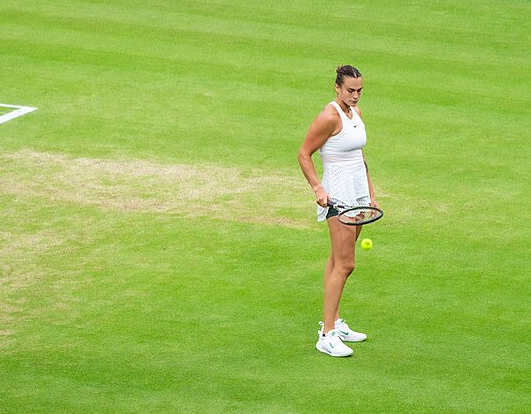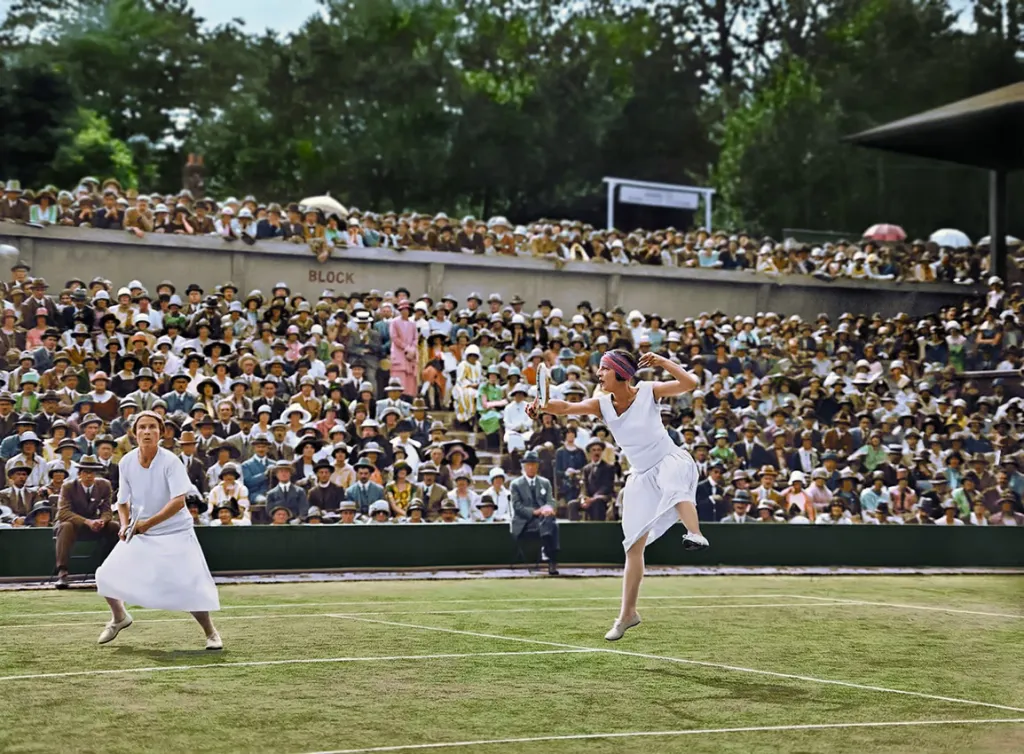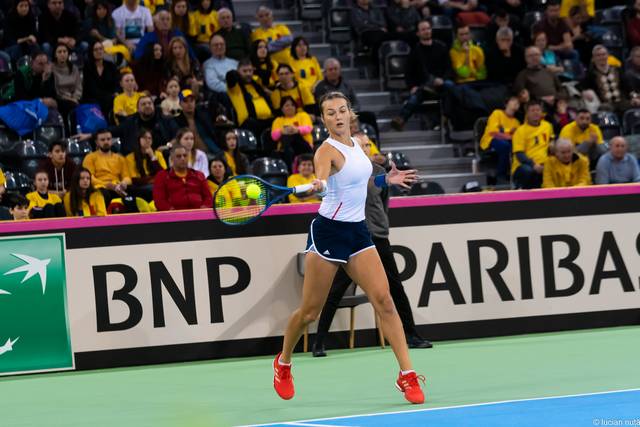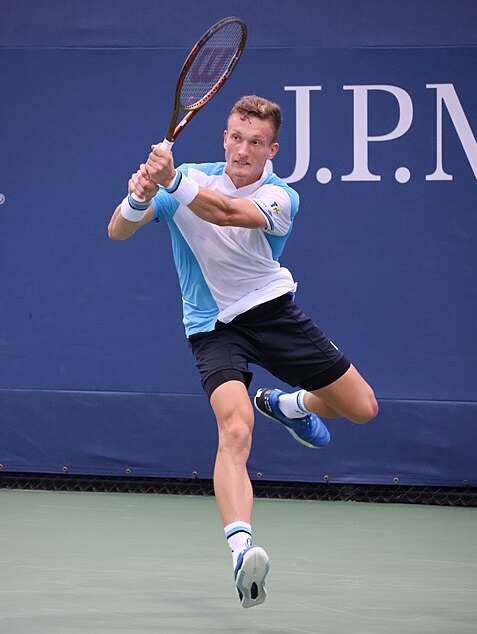Also today: January 26, 1924

It felt like a pivotal moment. Aryna Sabalenka had taken a 5-2 first-set lead in yesterday’s Australian Open semi-final against Coco Gauff. Gauff kept the set going with a strong service game for 5-3. Sabalenka lost the first point on her serve, but bounced back with a plus-one backhand winner.
At 30-15, the American struck again. She took advantage of a Sabalenka second serve to drag the Belarusian into a backhand rally, ultimately drawing an unforced error on the ninth shot and putting the game back in play.
Then, still just two points from the set, Sabalenka double-faulted.
The narrative practically writes itself. Aryna hits hard, aims for the lines, and keeps points short. Let her do that, and she will destroy you. Her first five opponents in Melbourne managed a grand total of 16 games against her. On the other hand, if you keep the ball in play, she’ll start pressing, trying too hard to dictate with her serve, going for too much when a smackable groundstroke presents itself.
Gauff, by this reading, is Sabalenka’s nightmare opponent. She won the US Open final by denying the Belarusian one would-be winner after another. Not only can she take Sabalenka’s game away from her, but Coco–at least on a good day–won’t give it back on her own serve. When she lets loose, Gauff wields just as much power as her more tactically aggressive opponent.
As it turned out, Sabalenka did lose that service game. Several twists and turns later, Gauff led the set, 6-5. Only then did Aryna regroup, winning four straight points from 30-love to force a tiebreak, then dropping just two more points to clinch the set. Gauff kept the second set close, but Sabalenka never allowed her to reach break point. The contest closed with a narrative-busting move: Facing match point, Gauff pulled out a 12-stroke rally, the kind of point that has been known to steer her opponent off course. But instead of compounding the damage, Sabalenka came back with two unreturned serves. Game over.
What to believe, then? Was the apparent first-set turning point a reflection of the true Sabalenka? Or is this the new Aryna, who slams the door when challengers sniff opportunity? Or is it something else, the all-too-common story in which someone looks like a clutch hero or a constant choker, only for us to discover, after crunching all the numbers, that she’s impervious to momentum and plays pretty much the same all the time?
Recovering at a disadvantage
Sabalenka’s serve games do follow a pattern after she loses a longish rally. But the results are not entirely straightforward.
On the next point (assuming the lost rally didn’t end the service game), Aryna is more likely to miss her first serve:
Year 1stIn% post-rallyL-1stIn% Change 2019 61.2% 55.9% -8.6% 2020 61.5% 57.0% -7.3% 2021 58.6% 52.6% -10.3% 2022 60.0% 59.9% 0.0% 2023 61.1% 61.3% 0.4% 2024 63.3% 62.5% -1.2% ---- TOTAL 60.5% 57.6% -4.8%
Most of the effect is concentrated in the earlier years of her career on tour. Yesterday, the trend ran in the opposite direction: She made nearly 76% of her first serves overall, but after Gauff won a rally, she landed 88% of them.
The trend is clearer–and persisting to the present–when we look at double faults after losing a rally:
Year DF% post-rallyL-DF% Change 2019 8.6% 10.4% 20.8% 2020 6.2% 8.4% 36.9% 2021 7.9% 11.8% 50.3% 2022 10.7% 10.1% -5.5% 2023 6.2% 7.2% 16.5% 2024 3.4% 8.3% 144.7% ---- TOTAL 7.9% 9.6% 22.5%
2022 was Aryna’s year of the yips; she was more likely to bunch double faults together than hit them in particularly nervy spots. (Put another way: Every spot was a nervy one.) The 2024 number will surely come back to earth, but it is still revealing: Sabalenka has made so much progress in this aspect of her game, but her second-serve struggles continue when she faces the threat of getting dragged into another rally.
Some of these effects persist even longer. From those service games that last long enough, here are Sabalenka’s first-in and double-fault percentages two points after losing a long rally:
Year 1stIn% +2 1stIn% Change DF% +2 DF% Change 2019 61.2% 55.8% -8.8% 8.6% 8.7% 1.2% 2020 61.5% 50.5% -17.9% 6.2% 7.2% 17.1% 2021 58.6% 56.0% -4.5% 7.9% 8.7% 10.5% 2022 60.0% 63.1% 5.3% 10.7% 7.8% -27.1% 2023 61.1% 59.2% -3.2% 6.2% 8.4% 35.6% 2024 63.3% 57.1% -9.7% 3.4% 2.4% -30.1% ---- TOTAL 60.5% 57.1% -5.6% 7.9% 8.0% 2.0%
She continues to miss more first serves even two points after the rally setback. To some degree, the memory should have dissipated–after all, something else happened on the intervening point. On the other hand, she’s back in the same court. If a reliable serve didn’t work in the deuce court at 30-love, there’s reason to doubt it at 30-all.
The double fault trends are less clear, in part because our sample size is shrinking and double faults are blessedly rare. If nothing else, it’s safe to conclude that the explosion of double faults on the point after the lost rally doesn’t continue to nearly the same degree.
Tallying the cost
Now, this all seems bad. Sabalenka possesses one of the best first serves in the game; her whole attack is built around it. Her emergence as a superstar came after she got control of the service yips and cut her double faults down to manageable levels. After losing a long rally, she needs her serve more than ever, and–at least by comparison with other situations–it isn’t there for her.
Except… it doesn’t matter! At least not on the first point. Here is the bottom-line figure of service points won:
Year SPW% post-rallyL-SPW% Change 2019 59.6% 63.8% 7.2% 2020 60.3% 56.6% -6.0% 2021 61.5% 61.3% -0.3% 2022 57.2% 59.9% 4.7% 2023 63.7% 63.9% 0.4% 2024 66.7% 70.8% 6.3% ---- TOTAL 60.7% 61.7% 1.6%
Fewer first serves, but more serve points won. It isn’t supposed to work like that, but Sabalenka bounces back strong from lost rallies. A shift of +1.6% in her favor is solid enough, and it’s even better if you look solely at the last three years.
Part of the explanation is that she tightens up the rest of her game–exactly the opposite of what my off-the-cuff narrative suggests. Under pressure, I hypothesized, she would try too hard to end points. Instead, after losing a long rally, she’s more willing than usual to play another one: She commits 14% fewer plus-one errors than her usual rate, implying a lower rate of aggression when she has an early chance to put the point away.
On the second point after losing a long rally, the bottom-line outcomes are more mixed:
Year SPW% +2 SPW% Change 2019 59.6% 53.9% -9.5% 2020 60.3% 55.3% -8.3% 2021 61.5% 58.5% -4.9% 2022 57.2% 61.5% 7.4% 2023 63.7% 60.7% -4.7% 2024 66.7% 71.4% 7.1% ---- TOTAL 60.7% 58.2% -4.0%
While these aren’t as rosy as the next-point results, focus on the last few years. Since the beginning of 2022, Aryna has won more service points than usual when she returns to the serving direction where she recently lost a long rally–despite landing fewer first serves. She is even stingier with plus-one errors on these points, coughing up 29% fewer than usual.
These trends did not hold in yesterday’s semi-final. While Sabalenka made more first serves on the two points after Gauff outlasted her in a rally, fewer of them ended in her favor: 4% less on the first point, 12% less on the second. We can’t read too much into single-match totals with stats like these: 4% is a difference of one point. And Gauff is a far superior returner and baseline player than the typical WTAer, one who is unlikely to lose focus after going toe to toe with Sabalenka for a point or two. The average player pushes Aryna to a seventh shot barely one-tenth of the time; Gauff did so on one of every six points yesterday.
All of this leads us to an unexpected conclusion: Does Aryna Sabalenka have nerves of steel? First serves and double faults are just components in a larger picture; when we measure her results by points won, Sabalenka serves more successfully right after an opponent makes her uncomfortable. The yips are gone, and the on-court histrionics are a diversion that deceived us all. Aryna under pressure may be even more fearsome than her typical, terrifying self.
* * *
January 26, 1924: Suzanne’s longest day
Suzanne Lenglen wasn’t accustomed to spending much time on court. In eight tournaments since the 1923 Championships at Wimbledon, she had lost just ten games. Her doubles matches, especially with net maven Elizabeth Ryan at her side, were often just as lopsided. She never missed, she could put the ball anywhere on the court, and most opponents were lucky just to win a single point.

In January 1924, Lenglen eased her way back onto the circuit. Battling some combination of illness, anxiety, and hypochondria, she didn’t return to singles action until February. (She’d win her first three matches before dropping a game.) But she was a celebrity on the French Riviera, and she was prevailed upon to compete in doubles. She won the mixed at the Hotel Beau-Site tournament in Cannes to ring in the new year, and she entered both the women’s doubles–with Ryan–and the mixed at the Hotel Gallia tournament a few weeks later.
On the 26th, Lenglen and Ryan completed their waltz through the draw, defeating a British pair, Phyllis Covell and Dorothy Shepherd-Barron, 6-3, 6-4. Suzanne’s most aggravating foe was another Brit, a line judge with the temerity to call a foot-fault on the five-time Wimbledon champion. She tried to get the man removed and ultimately had to settle for his “voluntary” departure. “It is unfair,” she said. “The English are pigs.”
Her nerves would be tested even more severely in the mixed doubles final. Lenglen partnered Charles Aeschlimann of Switzerland, while Ryan teamed with the 43-year-old Canadian Henry Mayes. Both men were better known on the Riviera than in the tennis world at large, more clubbable than talented. Lenglen and Ryan–herself one of the top few woman players in the world–would be the stars of the show.
Lenglen and Aeschlimann took the first set, 6-4; Ryan and Mayes came back with a 6-1 frame of their own. The underdogs–that is, the team without Suzanne–built up an early lead in the third, thanks to Aeschlimann’s inconsistency and Ryan’s glittering play. Mayes served for a 4-2 advantage, but a lucky netcord halted their momentum, and the deciding set settled into a rhythm it wouldn’t break for 20 more games.
Only at 13-14 did Ryan finally give in. She gifted a double fault to her opponents, and Mayes’s fatigue–he had played a four-set men’s doubles final beforehand–began to tell. Lenglen and Aeschlimann broke serve, securing the 6-4, 1-6, 15-13 victory. It would stand as the longest set of Suzanne’s unparalleled career.
* * *
Subscribe to the blog to receive each new post by email:


